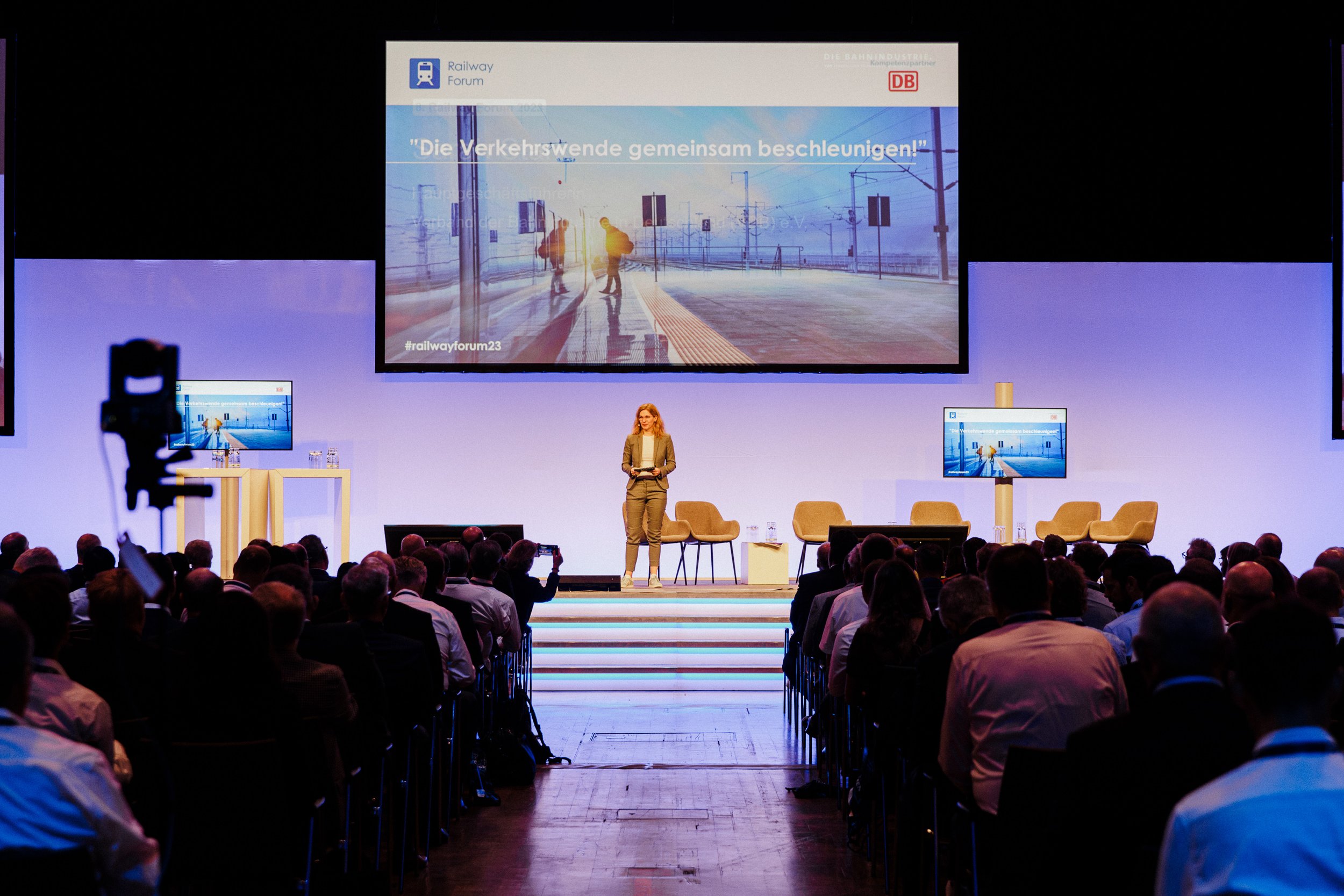
Strategic focus
5 strategic pillars determine the content of the event
Motto:
"The future of the rail sector: shaping change together"
The conference will focus on 4 strategic pillars that should pave the way for a more rail-oriented society. On both days of the conference, the speakers' contributions will shed light on these topics.
Strategic pillar 1:
Digital railroad
Digitalization is the key to the future of the rail industry. It is intended to improve infrastructure utilization, shift more traffic to rail and achieve greater customer benefits. The digital train runs (partially) autonomously on a route that is ETCS-capable. During the journey, it is connected to the cloud, to which it sends live data on upcoming maintenance work and the progress of the journey. It offers rail passengers a great experience thanks to 5G connections for the best possible mobile working and entertainment. It reaches its destination 95% on time.
For visions like these to become reality, the implementation of many digital technologies is necessary: smart mobility supports the customer journey through digital platforms and apps, cybersecurity protects data from external attacks, big data and IoT optimize operating and maintenance processes and AI optimizes rail travel and its production in many areas.
Strategic pillar 2:
Specialists and leadership
In an ever-changing environment, smart leadership is essential. A positive workplace culture is essential to increase productivity, ensure employee satisfaction and thus provide the human resources for the growth of the entire rail sector. As the world of work changes, companies need to adapt to new ways of working and flexible models to remain competitive and retain talent. In the future, managers will be coaches who develop employees rather than hierarchical leaders. Diversity and inclusion promote a diverse working environment that fosters creativity and innovation.
In view of the upcoming retirements, which will involve several hundred thousand workers in the entire rail sector in Germany over the next 10 years, tailor-made training and further education will be crucial in order to qualify specialists and continuously develop employees.
Strategic pillar 3:
Sustainability and new technologies
The rail industry plays a crucial role in the fight against climate change. By using green technologies, the ecological impact of the industry and its energy efficiency can be further improved. Measures to reduce energy consumption are just as important as supplementary compensation strategies to achieve climate neutrality and measures to preserve biodiversity.
For example, the use of sustainable materials in the construction of rail infrastructure helps to reduce the ecological footprint. The implementation of recycling and reuse strategies in the sense of a circular economy also conserves resources. The use of new, alternative energy sources offers further opportunities to position the rail sector as a leader in intermodal competition.
Strategic pillar 4:
Supply chains of the future
The world is in transition towards a new multipolar world order. Military conflicts, election results with nationalist tendencies, the introduction of tariffs and inflation have made the vision of global free trade fragile. International value chains are currently having to prove themselves in this violent storm. In order to avoid supply problems and material bottlenecks, they are often being reassessed and monitored using digital tools. The focus is shifting to continental and regional value chains in order to avoid critical points and conserve environmental resources. At the same time, the aim remains to make the best possible use of the cost benefits of global procurement.
At the same time, value chains are being challenged by ethical and moral issues. The scarcity of resources on our planet requires a circular economy in which traditional chains often have to become circular. The rights of people and children are also moving more than ever into the focus of procurement. We discuss how chain stability, environmental protection, human rights considerations and cost benefits can be reconciled.





